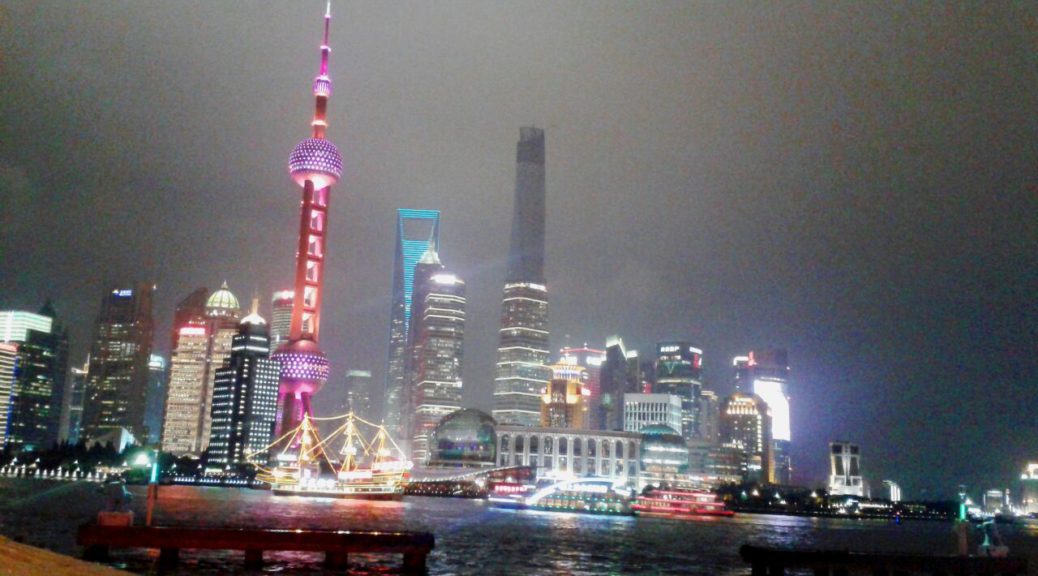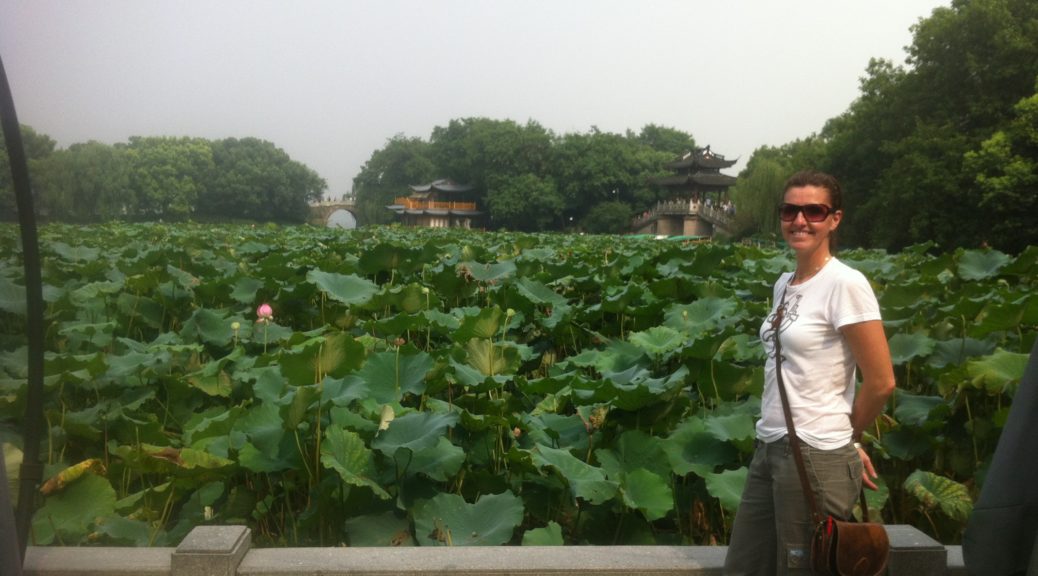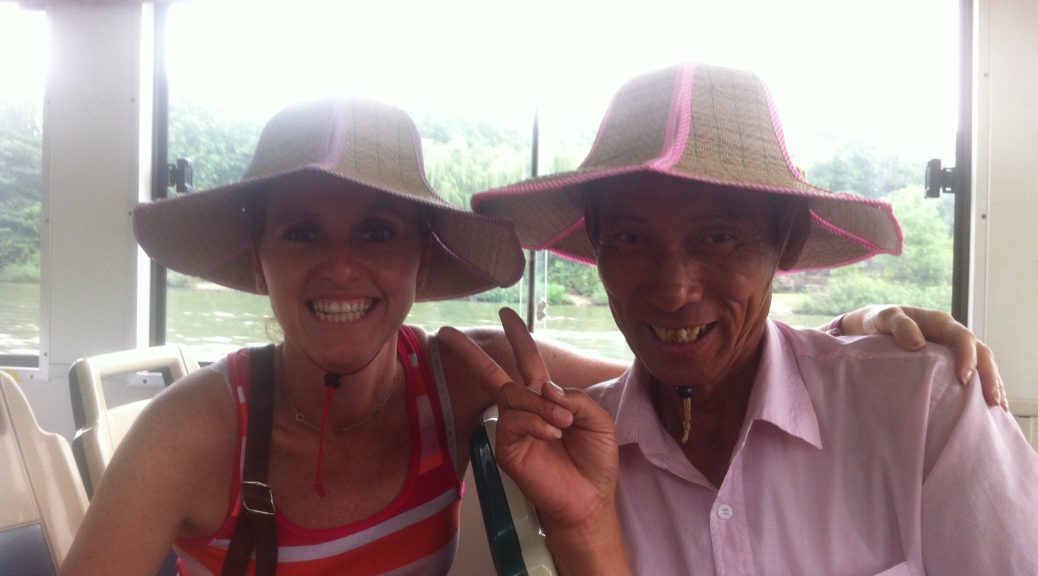XI’AN
30 August 2014
Not being ones for early-to-bed, it was too tough to stick to our self-imposed 21h00 bedtime in Shanghai and we were still pretty chuffed to make it by 10(ish).
There was something very unnatural about a 03h30 wake-up call, but we forced ourselves to get up and out and met our driver at 4am as planned for the cross-city taxi to the airport. We got to the airport in plenty of time (in fact, it wasn’t even open yet), which had us first in the queue with plenty of time to argue with the airline about our (very) overweight luggage.
We were disappointed to arrive to pelting rain in Xi’An (literally translated as “peace of the West”). While one half was trying to silver-line the “it could have been like this all holiday”, there was a definite “why today of all days?!” half bringing us down. Fortunately, our (private) tour guide, Bryan, and his sidekick, driver Charlie Wong, shared a very sunny disposition so we were soon optimistic that the day wouldn’t be a complete wash.
Another small town… of 10 million people… Xi’An has been a town of historical significance for being the birthplace and centre for many Emperors’ rule, most notably in the short but important Qin (pronounced “Chin”) Dynasty who ruled Chou (as China was then known) from 220 – 206 BC. The Qins first unified China – hence it was renamed after them – and formalised the Chinese script and currency.
Xi’An remained capital through the “Golden Age” of the Tang Dynasty some 1300 years ago, with a – very substantial, for then – population of 2 million people. The city was renown for arts and culture and sent envoys around the world to bring back artefacts from other countries, including a giraffe from Africa which had been thought to be a mythical creature!
We faced a terrible traffic jam, which extended the usual 23 minute trip to the Terracotta Warriors to almost 2 hours. A little disheartened, we suggested lunch before the Warriors tour as we’d eaten little all morning (since 03h30, it was now after 12 and we’d been treated to meal after meal so far this trip!) thanks to our 5* hotel packing us a very poor takeaway breakfast consisting of 4 crusty pastries, 1 coffee and an apple – to share!
It was a good call, not just to avoid rushing the warriors, but also because serendipitously the hardest rain poured down while we were in our cosy local eatery slurping up a noodle soup and wolfing down a “Xi’An burger” (pulled pork in toasted pita) and portion of pork dumplings.
Spirits a little restored, we entered the Terracotta Warriors complex.
Nothing like we expected, the Warriors were being excavated in large domed warehouses with neat permanent-structure entrance halls explaining what you were going to be seeing and where it all fitted in the (real-life) Dynasty saga.
The Warriors were discovered in 1974, quite by accident by a farmer who was looking for a spot to dig a well and stumbled on some artefacty stuff, which he reported to the government. They gave him 5 Yuan (R8,75) for his efforts and, since all the land in China belongs to the government (the people only have lease on the properties they build on the land not the land itself), their excavation began. The farmer has made himself somewhat of a local celeb though, availing himself a few mornings a week to man a table in the foyer and sign coffee table books. Our morning happened to be one such and we caught a glimpse of this modern day hero in the flesh (but didn’t buy a book since they were all in Chinese).
Emperor Qin’s are located 1,5km from Emperor QinShihuang’s mausoleum, symbolising the main defending force that guarded the capital before the Emperor died (bearing in mind he started building it when he was 25 and died at 39). Their tomb was in place to protect the Emperor’s tomb and be in place for him when he returned to the after-life.
Walking into the first pit, you couldn’t help but catch your breath. It was everything you heard it would be and so much more than the pictures prepare you for! 236 metres long and 62 metres wide, it was estimated to contain 6,000 warriors and horses. Even with only about a third currently excavated, it was visual overload. Rows and rows of soldiers facing forward; each one hand crafted with a unique outfit and face, not a single one moulded or duplicated. Unbelievably sophisticated sculpture on such a large scale for now, let alone 2 millennia ago!
Closer inspection revealed the exquisite detail. Hair styles, headwear, shoes and other detail indicate rank (remember this was an army, after all). Each soldier had fingernails and even palmprints! Most of the soldiers’ expressions were sombre or sad, likely reflecting the feelings of the artists who were forced to create them (all Chinese men were subject to one month a year conscription to perform such projects for the Emperor); the bellies of the higher ranked officers were slightly bloated to reflect their pre-battle “liquid courage” indulgence.
The soldiers were made, hollow around a clay coil, off-site and transferred to their positions down the ramps found in each corner of the pit, dug to about 5 metres below ground level. They were placed – interspersed with a few warhorses and chariots (which were made of wood, but can be seen in the fossilised remains) – in rows of 4, each soldier on their own tile stand, on a road made of bricks that are still in tact (2,200 years later!) and bear the imprint signature of their producer! The corridors are divided by clay walls that supported the huge wooden pole rafters covered with mats, earth fill and tilled earth that sealed the Warriors’ tomb and completely concealed them from above.
Sadly: enemies at the time looted the pits for their bronze weapons; the pits collapsed and crushed lots of the soldiers; over time the local people had been using the ground above for burial plots and tombs; and the initial excavation had revealed painted soldiers, but exposure to the light and air made the paint peel within a fortnight… so much of the history is lost to us forever.
… but…
The archeologists had done an incredible job of puzzle-piecing the remnants together (and maintaining the integrity of the pieces in their repair jobs) so it was still a very worthwhile excursion AND they have stopped unearthing more soldiers until they get a handle on how to preserve the paint, so there’s something to look forward to in the future when they get that right.
Pit 2 was just as interesting – if not just much less spoken-about. Located 20 metres from Pit 1, Pit 2 was in an L shape, 124 x 98 metres, covering 6,000 square metres. The contents were a mixture of the military forces – archers, war chariots, cavalrymen and infantrymen – who appear independently, but could presumably assemble to constitute a complete battle formation when required, as was the distinct style of the Qin military strategy.
While the soldiers were slightly larger than life (to appear stronger and more powerful), the other objects are only proportions of real-life since they believed at that time that the Emperor would come back half size in the next life. So, Pit 2 was a collection of half-size horses and carriages. Or maybe, my sceptical nature says, the half-size superstition suited the frugal Emperor as he made the soldiers from cheap terracotta, but the carriages and horse accessories were all bronze, silver, gold, alloys…
Pit 3 was a 520 square metre U shape 29 metres long by 25 metres wide. From its contents, it was surmised that this was the army’s Command Centre. Sadly, it was badly destroyed in history, so reveals only 68 pottery figures, 1 chariot and 34 bronze weapons. Swords had chrome plating with a thickness of 10 to 15 micron to act as a protective cover, which is interesting seeing as the Germans and Americans only “invented” chrome plating in 1937 and 1950!
The last thing to visit was the Emperors Mausoleum, with its 81 satellite pits with all sorts of treasures and resources. Offsite (but only 10 minutes away) the Mausoleum Museum was a bit lacklustre after the Warrior pits (which is probably why it only costs 90 Yuan and the Warriors cost 150).
The view in the pits was from above, through glass floors, which was kinda cool, but the lighting was very low (ostensibly to preserve the artefacts) so you couldn’t see as well as you could in the Warrior pits. There were lots of very well laid-out glass case exhibits, but the artefacts were quite unexciting (crockery, decor, tools, stamps etc) as compared.
It was estimated that the population of China back then, 2200 years ago, was about 30 million people. 1 million were soldiers and of the rest, about 700,000 people’s national duty conscription was dedicated to this project… which is estimated to have cost as much as one third of the country’s GDP. He had a fully manned and functional palace above the ground – even after his death, with servants continuing their duties and serving food to his empty seat at the royal table “feeding his soul” – and an impressive ready-for-action battalion below the ground. The Emperor does seem (from today’s pragmatic perspective) to have been a bit cooked, allocating all that time and resources to setting everything up for his next life. But thank goodness he did – it’s a spectacular worthy of its arguable title as “8th Wonder of the World”.
It was a pity that the rain and the traffic jam cost us seeing the other sights of Xi’An from our original tour plan. I don’t think it counts that we saw lovely pictures of the bell and drum towers, city walls, Big Goose Pagoda, Muslim Quarters etc from a delightfully detailed pictorial article in the inflight magazine on our way back to Beijing!
Almost a good enough reason to go back and spend another day with our friendly tour guide, Bryan Bai, and his affable driver, Charlie Wong.
See more on Bryan Bai (historytourguide@gmail.com) or on TripAdvisor .



